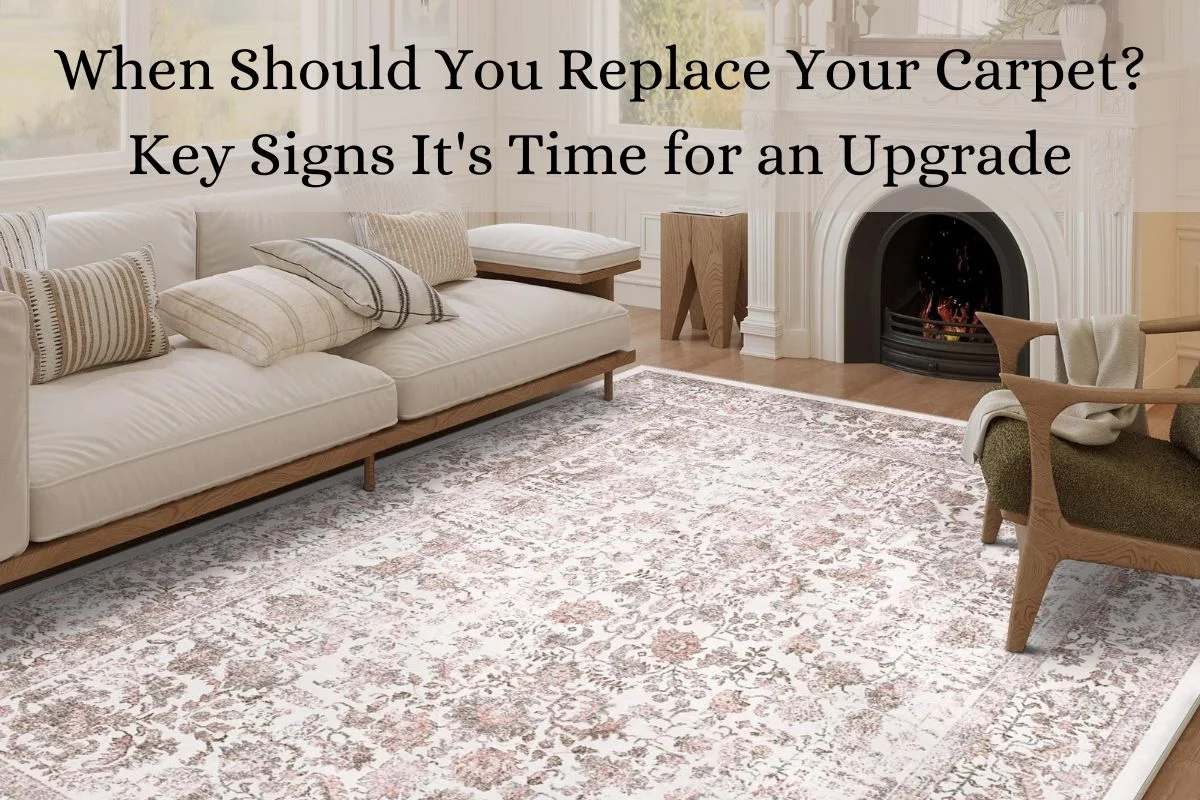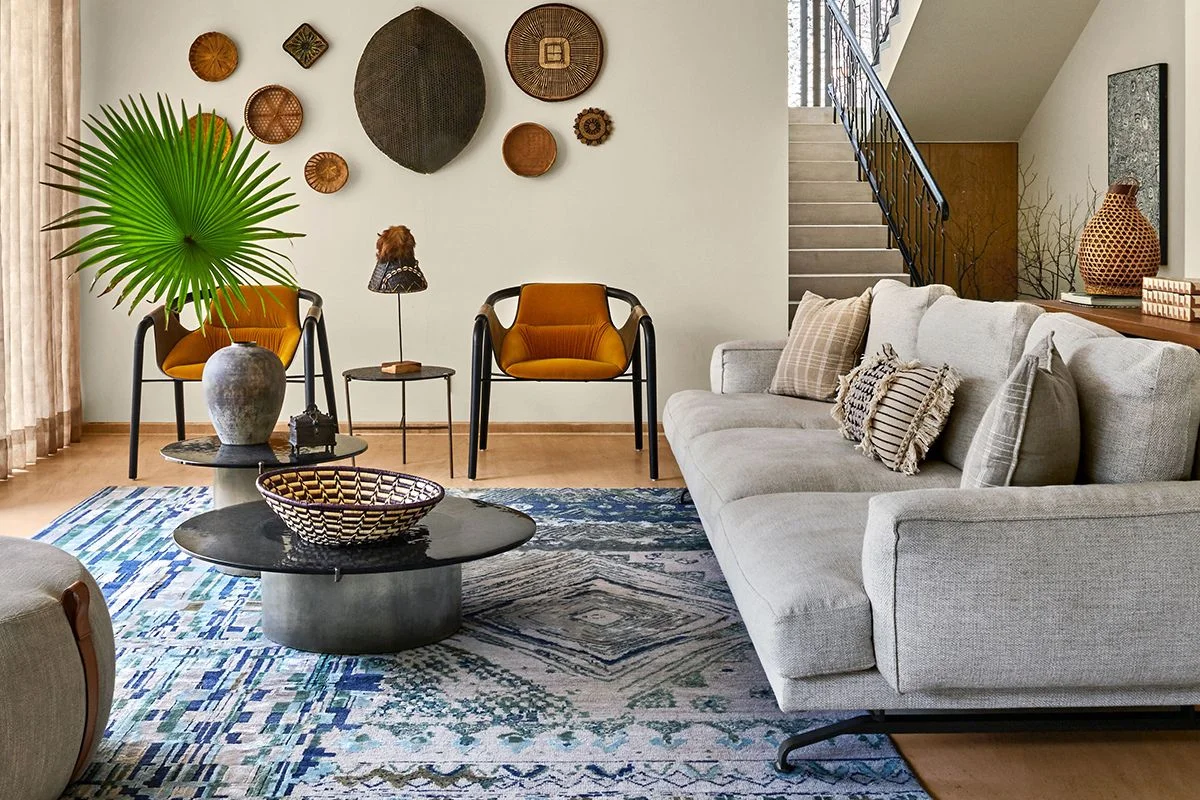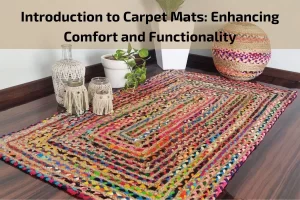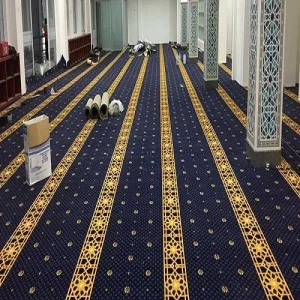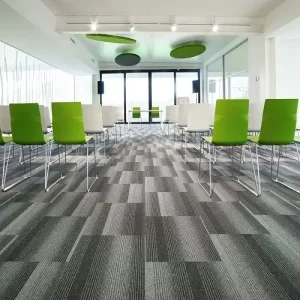Carpets are a popular flooring choice due to their comfort, insulation, and aesthetic appeal. However, like any home feature, they don’t last forever. Over time, even the best-maintained carpets can show signs of wear, making your space look tired or affecting indoor air quality. Knowing when to replace your carpet is crucial for maintaining a clean, healthy, and visually pleasing home. In this blog, we’ll explore the key signs that indicate it’s time for an upgrade, helping you ensure your carpet continues to enhance the look and feel of your living spaces.
Visible Wear and Tear: When Your Carpet Shows Its Age
Over time, carpets in high-traffic areas begin to show visible signs of wear and tear, such as frayed edges, flattened fibers, or thinning spots. These are especially common in hallways, stairs, and living rooms. If your carpet no longer feels soft or resilient underfoot and the fibers have matted beyond repair, it’s time to consider an upgrade. Even with regular maintenance, the fibers break down, and the once plush texture diminishes. A worn-out carpet also loses its aesthetic appeal, making your space look tired and neglected, signaling the need for replacement.
Unyielding Marks: When Stubborn Stains Signal a Carpet Replacement
Carpets are prone to spills and accidents, but over time, some stains become impossible to remove. Stains from red wine, pet accidents, or grease can embed deeply into the fibers, especially if not treated immediately. Even professional cleaning may not restore the carpet to its original appearance. Fading or discoloration from sun exposure or harsh cleaning chemicals can also leave unsightly marks. When your carpet has too many of these stubborn, visible stains that can’t be hidden, it can degrade the overall look of your space, indicating it’s time for a new carpet.
The Stink Factor: Recognizing Lingering Odors as a Carpet Red Flag
If your carpet holds onto unpleasant odors even after multiple cleanings, it could indicate deeper issues. Pet accidents, mold, or long-standing spills can seep into the carpet fibers and padding, making it difficult to eliminate odors. Over time, these odors can worsen, especially in damp or humid environments, potentially leading to mold growth. Lingering smells affect indoor air quality and overall comfort. If carpet deodorizers and professional treatments fail to remove the smell, it’s likely a sign that the material has been compromised, and replacement is necessary to restore a fresh atmosphere.
Sneezing in Your Sanctuary: How Old Carpets Trigger Allergy Symptoms
Old carpets tend to accumulate allergens like dust, pet dander, pollen, and even mold spores, especially if not regularly deep cleaned. If you or your family members start experiencing heightened allergy symptoms such as sneezing, coughing, or skin irritation indoors, your carpet could be the culprit. Over time, even the best vacuums struggle to remove these deeply embedded allergens, particularly in thick carpets. When allergies persist despite cleaning efforts, replacing the carpet with hypoallergenic options like hardwood, vinyl, or modern low-pile carpeting can significantly improve indoor air quality and reduce symptoms.
Padding Deterioration: Recognizing the Signs of Worn-Out Carpet Underlayment
The padding beneath your carpet plays a vital role in providing cushioning, insulation, and sound absorption. Over time, this padding can break down due to regular foot traffic, spills, and general wear. Signs of padding deterioration include a lumpy or uneven surface, noticeable dips, or a harder, less comfortable feel underfoot. A degraded carpet pad can also cause the carpet to wear out faster, reducing its lifespan. If you notice these signs, replacing the carpet and padding together can restore the comfort and durability of your flooring, ensuring even wear and a plush feel.
The Lifespan of Your Carpet: When Age Signals It’s Time for a Change
Most carpets have a lifespan of about 8 to 10 years, depending on the material and usage. Even well-maintained carpets begin to show signs of aging after a decade, with fading, loss of texture, and general wear becoming evident. Beyond the visible wear, older carpets can harbor allergens, stains, and odors that are difficult to eliminate. If your carpet has reached this age range, replacing it can enhance both the appearance and cleanliness of your home. Additionally, modern carpets come with better technology, such as stain resistance and eco-friendly materials, making an upgrade a wise investment.
Revitalize Your Space: Why Outdated Carpet Styles Demand an Upgrade
Carpets can quickly become outdated as interior design trends evolve. If your carpet was installed years ago, it might no longer fit your current style preferences or the overall decor of your home. Whether it’s a once-popular shag carpet or a dated color choice, an old carpet can detract from your home’s aesthetic. Upgrading to modern, neutral tones or more durable materials can instantly refresh your space. With the wide variety of materials and styles available today, you can easily find a carpet that aligns with your current tastes and complements your interior design.
The Hidden Dangers of Water Damage: Is Your Carpet at Risk
Water damage is one of the most serious issues for carpets, as it can lead to mold growth beneath the surface. If your carpet has been exposed to water from leaks, flooding, or moisture, the fibers and padding can retain that moisture, creating a breeding ground for mold and mildew. This not only causes visible damage, such as discoloration and warping but also poses health risks due to mold exposure. If you detect any signs of water damage or suspect mold under the carpet, it’s crucial to replace it immediately to prevent further damage and maintain a healthy environment.
When Cleaning No Longer Works: Signs Your Carpet Needs Replacing
If you find yourself constantly cleaning your carpet, yet it still looks dull and dirty, it may be past its prime. Older carpets become harder to clean as the fibers wear down, allowing dirt, grime, and allergens to embed more deeply. Even professional cleaning may not fully restore the carpet’s original appearance. When cleaning becomes a frequent chore without noticeable improvement, it’s a clear sign the carpet has outlived its usefulness. Replacing the carpet will not only save time and effort but also improve the cleanliness and overall appearance of your living space.
Rising Noise Levels? How Your Worn Carpet Might Be the Culprit
One of the benefits of carpeting is its ability to absorb sound, making rooms quieter and reducing echo. However, as carpets age and the padding wears down, they lose this sound-absorbing capability. If you notice an increase in noise levels or a more pronounced echo in rooms with carpeting, it could indicate that both the carpet and the padding have deteriorated. Replacing the carpet with fresh padding can restore the noise-reduction qualities, making your space more comfortable and acoustically pleasant. This is especially important in areas like bedrooms and living rooms, where sound control is vital.
Conclusion:
Recognizing the signs that it’s time to replace your carpet is essential for maintaining a clean, comfortable, and visually appealing space. From visible wear and stubborn stains to lingering odors and allergy symptoms, each of these indicators points to a carpet that has outlived its functionality. Old padding, water damage, and an outdated style also diminish the performance and aesthetic of your flooring. By addressing these issues promptly, you can upgrade to modern, durable carpets that enhance the comfort and value of your home, while also improving indoor air quality and reducing long-term maintenance costs.

